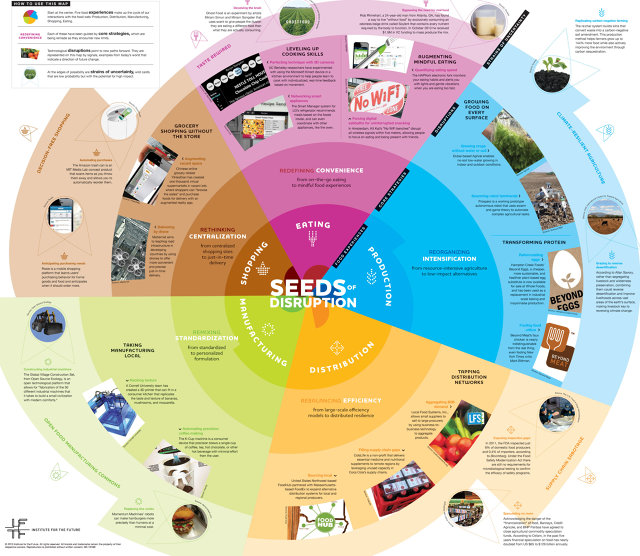The Future Of Food, Mapped Out For The Next 10 Years
One meal in San Francisco provides a glimpse at the future of food--and it sure looks fancy.
In June, I sat down to a dinner in San Francisco that couldn't have taken place a decade ago.
For the appetizer, the long table of guests shared bowls of seasonal salad from Graze the Roof, a vegetable garden located on the roof of Glide Memorial Church. The main course was a frittata with onions (served in a compostable box) from Sprig, a new dining-on-demand service founded by Nate Keller, Google's former executive chef. Dessert consisted of lemon curd mousse with strawberries and mint, prepared with Nomiku, which bills itself as the first immersion circulator made for home cooks.
These dishes have little in common, except for one thing: They all provide hints of ourcollective food future, as imagined by the Institute for the Future, which collaborated with Nomiku and Suppershare to put on the dinner.
The three courses--local greens, dining-on-demand, immersion circulator desert--represent examples of forecasts found on IFTF's Seeds of Disruption map, which looks at the food supply chain, technological disruptions, and low probability, high impact "wild cards" in the food industry over the next decade.
Here's the full map (click to zoom):

Many of the trends detailed in the map are still in their infancy. Drone delivery of food (and other goods), for example, is often discussed, but has not yet been put into use--though Amazon may soon change that. Some, like "augmenting mindful eating" with products like Soylent and the HAPIfork electronic fork, are already available to the public. (Note: Hampton Creek currently sells its egg-free mayonnaise at many grocery and big box stores, but does not sell its Beyond Eggs product--except to a few manufacturers--as indicated on the map).
The trends exemplified by my future-focused dinner are also quickly coming to fruition. Nomiku--a compact sous vide appliance that lets home cooks make things previously only accessible to restaurant chefs--is an example of the local manufacturing trend, which also includes 3-D printed food and Momentum Machines' ultra-precise hamburger-making robots, says Sarah Smith, Research and Design Manager at IFTF.
Graze the Roof fits into the "growing food on every surface" trend. Sprig falls into the larger "rebalancing efficiency" category in the map.
"One of the core ideas [we discussed] was the idea of social structuring, of using the coordination logic of the Internet, like packet switching for physical packages. How could we route something like food seamlessly through a network by taking advantage of newcoordination technology to overcome things like food waste? Sprig was a way to start a conversation like that," says Smith.
IFTF's ambitions in the food futures space go far beyond this map; the organization's new Food Futures lab aims to take the food conversation "from startup entrepreneur types to big food companies," according to Smith.
No comments:
Post a Comment